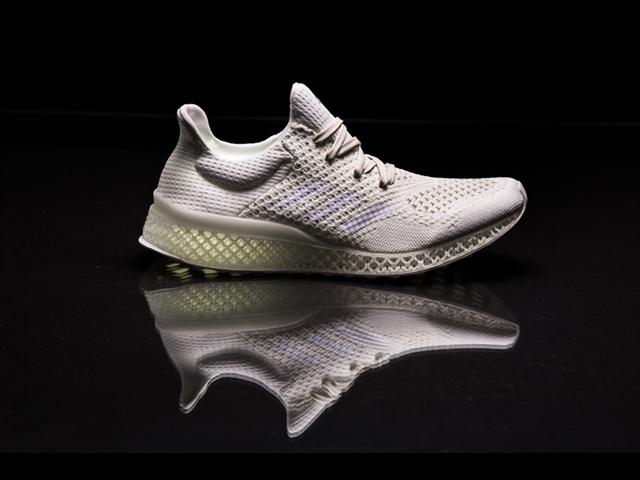Adidas unveils the ultimate 3D-printed personalized shoe design
If the German sporting goods giant adidas (Herzogenaurach, Germany) has anything to say about it—which, of course, it does—3D printing will dominate the future of performance footwear. And with Futurecraft 3D, a unique 3D-printed running shoe midsole which can be tailored to the cushioning needs of an individual’s foot, adidas is making the future happen today. This is all with the help of an open source partnership with Materialise, the Belgian additive manufacturing experts.
October 25, 2015

 The idea is, that a customer can walk into an adidas store, take a brief run on a treadmill and instantly be fitted with a 3D-printed running shoe that is a “flexible, fully breathable carbon copy of the athlete’s own footprint, matching exact contours and pressure points,” says the company.
The idea is, that a customer can walk into an adidas store, take a brief run on a treadmill and instantly be fitted with a 3D-printed running shoe that is a “flexible, fully breathable carbon copy of the athlete’s own footprint, matching exact contours and pressure points,” says the company.
Adidas achieved this by creating a unique combination of material and process. The company called it a production breakthrough that will take the running shoe standard to the next level, offering unprecedented individualized support and cushioning for every foot.
“Futurecraft 3D is a prototype and a statement of intent. We have used a one-of-its-kind combination of process and material in an entirely new way. Our 3D-printed midsole not only allows us to make a great running shoe, but also to use performance data to drive truly bespoke experiences, meeting the needs of any athlete,” said Eric Liedtke, Executive Board Member of adidas AG.
Materialise assisted adidas with the generation of a lightweight structure in the 3D-printed midsole which would keep the shoe at a comfortable weight. The design and engineering team at Materialise worked with 3-matic STL to create the structure, improving the midsoles’ flexibility without compromising on rigidness and strength. The midsoles were then laser sintered in TPU, the first durable fully-flexible 3D printing material to be used in a consumer product, through Materialise’s certified manufacturing process. Additive manufacturing automation and control software Streamics provided an overview of the entire production process, ensuring the traceability and repeatability which is crucial to the manufacturing of end-use consumer products.
Adidas says that the Futurecraft 3D story is just the first chapter of what is to become the adidas Futurecraft series.
“Futurecraft is our sandbox. It is how we challenge ourselves every day to explore the boundaries of our craft,” said Paul Gaudio, Creative Director, adidas. “Driving material and process innovation, bringing the familiar into the future. Marrying the qualities of handcrafting and prototyping with the limitless potential of new manufacturing technologies. Futurecraft is stripped back—fast, raw and real—it is our approach to design.”
More announcements are expected from adidas’ Futurecraft initiative over the next six months.
About the Author(s)
You May Also Like


